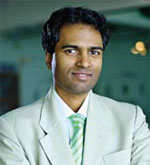For several years, the district cooling industry in the region has been pleading for better power tariffs to operate plant rooms, and a differential tariff structure for thermal energy storage to be a significant factor.

B Surendar
For several years, the district cooling industry in the region has been pleading for better power tariffs to operate plant rooms, and a differential tariff structure for thermal energy storage to be a significant factor. The rationale for the demand for better rates is, of course, based on the argument that district cooling would shave peak demand, bring about immediate capital cost savings in power plants and distribution, and a reduction of CO2 emissions from power plants. Above all, the votaries of a better tariff regimen argue, district cooling would deliver a marked improvement in energy efficiency – a significant benefit in the context of regional aspirations for reducing domestic energy demand.
In a nutshell, the argument goes that district cooling, while extracting its share of power from the grid, would end up saving significant mega-wattage to tilt the numbers in a favourable direction in a cost-benefit analysis.
The same argument is employed by votaries of turbine inlet air chilling, who say that the investment in power for cooling the turbines would increase the power-generational efficiency of the turbines during the hot summer months. Evidence of this is available in Qaseem, in Saudi Arabia, where each system, while capable of 75 MW output at ISO conditions, yielded only 57 MW in peak summer conditions (50°C and 10% Relative Humidity). With the introduction of TIAC to cool the inlet air to 10°C, the output increased to 77 MW. In short, the principle of TIAC – that of “cheating” the gas turbine into believing it was winter time – led to a significant increase in power generation.
In an extension of that argument, a proponent of the UV-C technology (short-wave ultraviolent radiation in the “C” band; also known as ultraviolet germicidal irradiation) speaks of “dramatic energy savings that can be had by installing UVC lighting on coils and drain pans”. While the UV-C technology needs energy to operate, it keeps the biofilm or mould growth away from the cooling coil, which the proponent says, “is maintained as new and operates much more efficiently, with approximately 15%-30% energy savings”. (See the event report on the 1st Annual Middle East IEQ Conference in this issue.)
The adage, “It takes money to save money” comes to mind. The transition of words to action, though, requires a marriage of vision and courage. More so in the lingering economic climate of uncertainty we find ourselves in.
– B Surendar | @BSurendar_HVACR
Copyright © 2006-2025 - CPI Industry. All rights reserved.